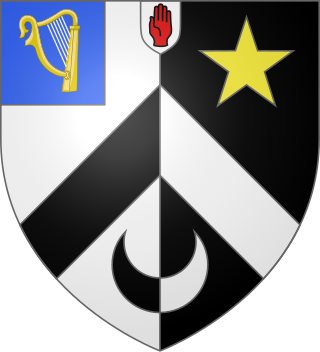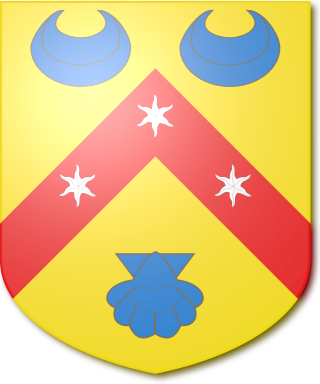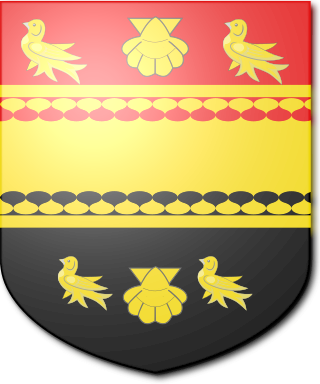
The Strachey baronetcy, of Sutton Court in the County of Somerset, England, is a title in the Baronetage of the United Kingdom. This family was originally seated at Walden, Essex, where William Strachey was living under the rule of Edward VI. Later they moved to Surrey and at last settled at Sutton Court, Somerset. The title was created on 15 June 1801 for the politician and civil servant Henry Strachey. Sir Henry was private secretary to Lord Clive during his last expedition to India in 1764. He also took part in negotiations for peace with North America where he assisted the kings commissioners at Paris. He died in 1809 and was succeeded by his eldest son Henry, the second Baronet Strachey. His great-grandson, the fourth Baronet, was a Liberal politician. On 3 November 1911, he was created Baron Strachie, of Sutton Court in the County of Somerset, in the Peerage of the United Kingdom. He later served as Paymaster General. The peerage became extinct on the death of his son, the second Baron, in 1973. The baronetage is currently dormant.
The Adair Baronetcy, of Flixton Hall in the County of Suffolk, was a title in the Baronetage of the United Kingdom. It was created on 2 August 1838 for Robert Adair. He was succeeded by his eldest son, the second Baronet. He sat as Member of Parliament for Cambridge. In 1873 he was created Baron Waveney, of South Elmham in the County of Suffolk, in the Peerage of the United Kingdom. The barony became extinct on his death in 1886 while he was succeeded in the baronetcy by his younger brother, Hugh Adair, the third Baronet. The latter had earlier represented Ipswich in Parliament. Two of his sons, the fourth and fifth Baronets, both succeeded in the title. The fifth Baronet's son, the sixth Baronet, was a major general in the British Army. The title became extinct on the latter's death in 1988.

The Alexander, later Cable-Alexander Baronetcy, of the City of Dublin, is a title in the Baronetage of the United Kingdom. It was created on 11 December 1809 for William Alexander, Lord Mayor of Dublin. The second Baronet was a Director of the Bank of Ireland. The third Baronet was Attorney-General to Albert Edward, Prince of Wales, later Edward VII. The seventh Baronet assumed in 1931 by deed poll the additional surname of Cable. As of 31 December 2013 the present Baronet has not successfully proven his succession and is therefore not on the Official Roll of the Baronetage, with the baronetcy considered dormant.

The Henniker Baronetcy, of Newton Hall in the County of Essex, was created in the Baronetage of the United Kingdom on 2 November 1813 for Brydges Henniker, who had earlier represented Kildare Borough in the last Irish Parliament. He was the youngest son of John Henniker, 1st Baron Henniker. The sixth baronet was an admiral in the Royal Navy and sat as Conservative member of parliament for Galloway. The eighth Baronet was a brigadier in the Royal Engineers.

The Beecham Baronetcy, of Ewanville in the Parish of Huyton in the County Palatine of Lancaster, is a title in the Baronetage of the United Kingdom. It was created on 17 July 1914 for the Lancashire pill manufacturer Joseph Beecham. Joseph was succeeded by his eldest son, Thomas, a conductor who founded the London Philharmonic Orchestra in 1932.
The Buchan-Hepburn Baronetcy, of Smeaton-Hepburn in the County of Haddington, is a title in the Baronetage of the United Kingdom. It was created on 6 May 1815 for George Buchan-Hepburn. He was a Judge of the Admiralty Court from 1790 to 1791 and a Baron of the Exchequer for Scotland from 1791 to 1814. Born George Buchan, he assumed by Royal licence the additional surname of Hepburn in 1764, which was that of his maternal grandfather. His grandson, the third Baronet, represented Haddington in the House of Commons from 1838 to 1847. His son, the fourth Baronet, was a deputy lieutenant of Haddingtonshire. On the death of his grandson, the sixth Baronet, in 1992, the line of the eldest son of the second Baronet failed. The late Baronet, stepfather of the Duchess of Northumberland, was succeeded by his third cousin, the seventh holder of the title. He was succeeded by his grandson in 2022. The family surname is pronounced "Bukkan-Hebburn".
The Brownrigg Baronetcy is a title in the Baronetage of the United Kingdom. It was created on 9 March 1816 for General Robert Brownrigg. He was Governor of Ceylon from 1813 to 1820. He was succeeded by his grandson, the second Baronet. On his death the title passed to his younger brother, the third Baronet. His eldest surviving son, the fourth Baronet, was a Rear-Admiral in the Royal Navy. As of 2024 the title is dormant.

The Synge Baronetcy, of Kiltrough in the County of Meath, is a title in the Baronetage of the United Kingdom. It was created on 12 August 1801 for Robert Synge. The third Baronet served as High Sheriff of County Cork in 1844. The family surname is pronounced "Sing". As of 28 February 2014 the present Baronet has not successfully proven his succession and is therefore not on the Official Roll of the Baronetage, with the baronetcy considered dormant since 2011.

The Medlycott Baronetcy, of Ven House in the County of Somerset, was a title in the Baronetage of the United Kingdom. It was created on 3 October 1808 for William Medlycott, Member of Parliament for Milborne Port from 1790 to 1791. The family descended from James Medlycott, of Ven House, who represented Milborne Port in the House of Commons between 1710 and 1722. His son Thomas Medlycott died without surviving male issue in 1763 and left his estates to his maternal nephew Thomas Hutchings, who adopted the surname of Medlycott. His son was the first Baronet. The baronetcy became extinct with the death of the 9th Baronet in 2021.
The Hartwell Baronetcy, of Dale Hall in the County of Essex, is a title in the Baronetage of the United Kingdom. It was created on 26 October 1805 for Admiral Francis Hartwell.

The Price, later Rugge-Price Baronetcy, of Spring Grove in Richmond in the County of Surrey, is a title in the Baronetage of the United Kingdom. It was created on 2 February 1804 for Charles Price, Member of Parliament for the City of London from 1802 to 1812 and Lord Mayor of London from 1802 to 1803. The fifth Baronet assumed in 1874 by Royal licence the additional surname of Rugge. As of 28 February 2014 the present Baronet has not successfully proven his succession and is therefore not on the Official Roll of the Baronetage, with the baronetcy considered dormant since 2000.

The Poore Baronetcy, of Rushall in the County of Wiltshire, is a dormant title in the Baronetage of Great Britain. It was created on 8 July 1795 for John Methuen Poore, with remainder, failing heirs male of his own, to his brother Edward Poore and the heirs male of his body.

The Dalrymple, later Dalrymple-Hamilton, later Hamilton-Dalrymple Baronetcy, of North Berwick in the County of Haddington, is a title in the Baronetage of Nova Scotia. It was created on 29 April 1697 for the Hon. Hew Dalrymple, Lord President of the Court of Session under the judicial title of Lord North Berwick from 1698 to 1737. He was the third son of James Dalrymple, 1st Viscount of Stair, and the brother of John Dalrymple, 1st Earl of Stair, Sir James Dalrymple, 1st Baronet, of Cranstoun, and Sir David Dalrymple, 1st Baronet, of Hailes. The second Baronet sat as Member of Parliament for Haddington and Haddingtonshire. The third Baronet represented Haddingtonshire in the House of Commons. The fourth Baronet was Member of Parliament for Haddingtonshire, Ayrshire and Haddington. He assumed the additional surname of Hamilton after that of Dalrymple. The fifth Baronet sat as Member of Parliament for Haddington. The eighth Baronet assumed the surname of Hamilton before that of Dalrymple. The tenth Baronet was Lord-Lieutenant of East Lothian from 1987 to 2001.
The Ramsay baronetcy, of Balmain in the County of Kincardine, was created in the Baronetage of the United Kingdom on 13 May 1806 for Alexander Ramsay.

The Shaw baronetcy, of Bushy Park in the County of Dublin, was created in the Baronetage of the United Kingdom on 17 August 1821 for the Tory politician Robert Shaw. The 3rd Baronet was also a politician.

The Smith baronetcy of Eardiston, Worcestershire was created on 23 September 1809 in the Baronetage of the United Kingdom for William Smith.

The Dundas baronetcy, of Arniston in the County of Midlothian, was created in the Baronetage of the United Kingdom on 18 June 1898 for Robert Dundas, Chairman of the Midlothian County Council. The title became extinct on the death of the 7th Baronet in 1970.
The Elphinstone baronetcy, of Logie in the County of Aberdeen, was created in the Baronetage of Nova Scotia on 2 December 1701 for James Elphinstone, with remainder to heirs male whatsoever. The title became dormant on the death of the 4th Baronet in 1743.

The Elphinstone baronetcy, of Sowerby in the County of Cumberland, was created in the Baronetage of the United Kingdom on 25 May 1816 for Major-General Howard Elphinstone, a veteran of the Peninsular War. He was the youngest son of John Elphinstone, a captain in the Royal Navy and admiral in the Russian Navy.
The Arbuthnot baronetcy of Edinburgh' was created in the Baronetage of the United Kingdom on 3 April 1823 for Sir William Arbuthnot, Provost of Edinburgh.















